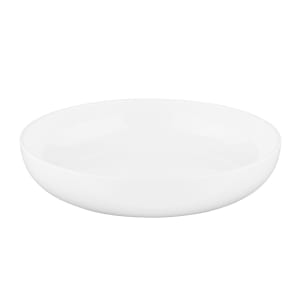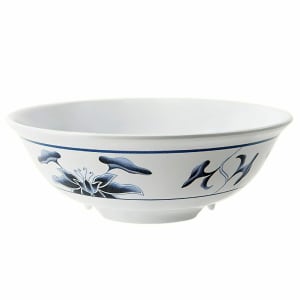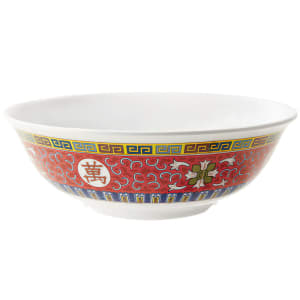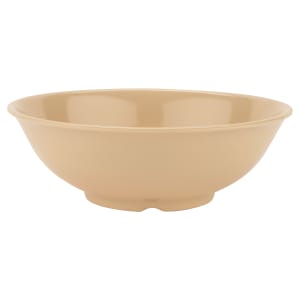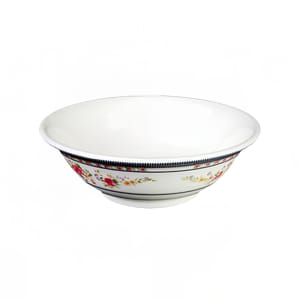Plastic & Melamine Bowls
Plastic bowls are a wonderfully cost-effective way to serve soups, cereal, or any other liquid-based menu item. More
Plastic Bowls: What You Need to Know
Melamine bowls are great for serving hot and cold food in any establishment that uses and cleans the same dinnerware multiple times a day. This plastic is break resistant and durable, able to endure the harsh environments of a demanding restaurant setting. Melamine bowls come in a variety of shapes, sizes, colors, patterns, and styles to fit any food service setting or theme. Scratch, stain, and break resistant, melamine is able to withstand the harsh environments of a busy restaurant setting.
While melamine might be the most popular type of dinnerware plastic, polycarbonate bowls serve many of the same purposes. Polycarbonate is one of the clearest plastics on the market, making it a great glass imitation. There are other types of plastic, made with different levels of durability, coloration, and cost. We'll discuss the benefits and drawbacks of plastic bowls below.
Common Questions About Melamine Bowls
What is melamine?
Melamine is an organic-based plastic, and while this might seem like an oxymoron, this clever material is made of plant fibers and a plastic resin. The fibers give it additional structure and durability, while the resin enables it to be shaped and hardened. Melamine bowls are hugely popular across all types of foodservice establishment because of their durability, versatility, and easy maintenance requirements. These bowls can also be made in a wide variety of colors and styles, enabling you to find melamine options that match whatever décor your establishment utilizes.
Melamine dinnerware can be used in both high- and low-temperature commercial dishwashers because it will not discolor or degrade under high heat or chemicals. Whether you need bowls for entrées or smaller salad or cereal bowls, melamine can meet that need. The biggest drawback to melamine is it cannot be used in a microwave. Microwaves can cause chemicals to leak out of the melamine and into the food, as well as damage the dinnerware itself. If microwaving is a large part of your foodservice, you should avoid melamine bowls.
What type of bowls can be made from plastic?
Plastic cereal bowls and plastic salad bowls are great options for casual eateries, hotel buffets, and any other foodservice establishment that doesn't need fancy dinnerware. Melamine bowls are great for casual restaurants that want durable dinnerware with bright colors. Plastic cereal bowls are a cost-effective way to supply a breakfast buffet, while plastic salad bowls are great for salad bars. Any high-volume application can benefit from plastic bowls as they are affordable when bought in bulk and cheap to replace when mishandled by busy guests.
How should I clean plastic bowls?
Melamine can be used in all types of commercial dishwasher, but other plastics have different tolerances. For example, polycarbonate bowls can be used in dishwashers but will discolor and become cloudy under chemical sanitizers. Items listed as just plastic can be difficult to decipher because there are many types of plastic, and each manufacturer might use a different blend. Check the product specifications page for the individual bowls you're considering to see how the manufacturer recommends maintaining their specific plastic.


